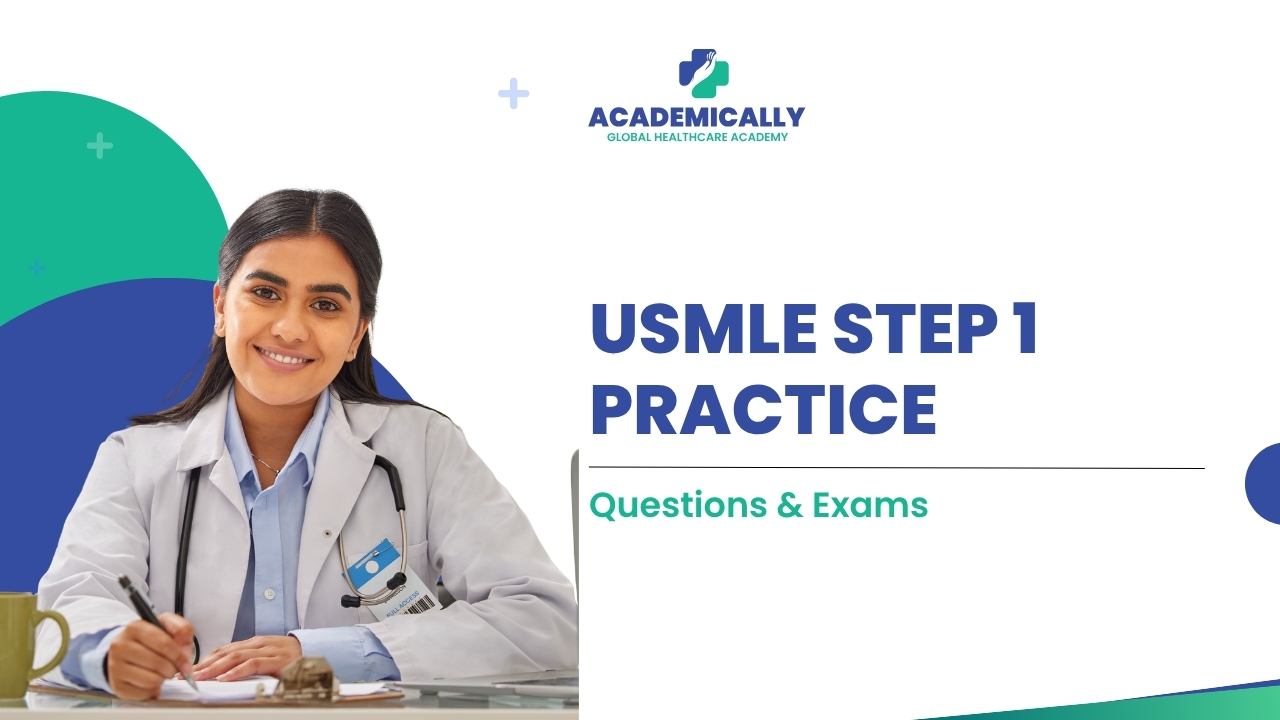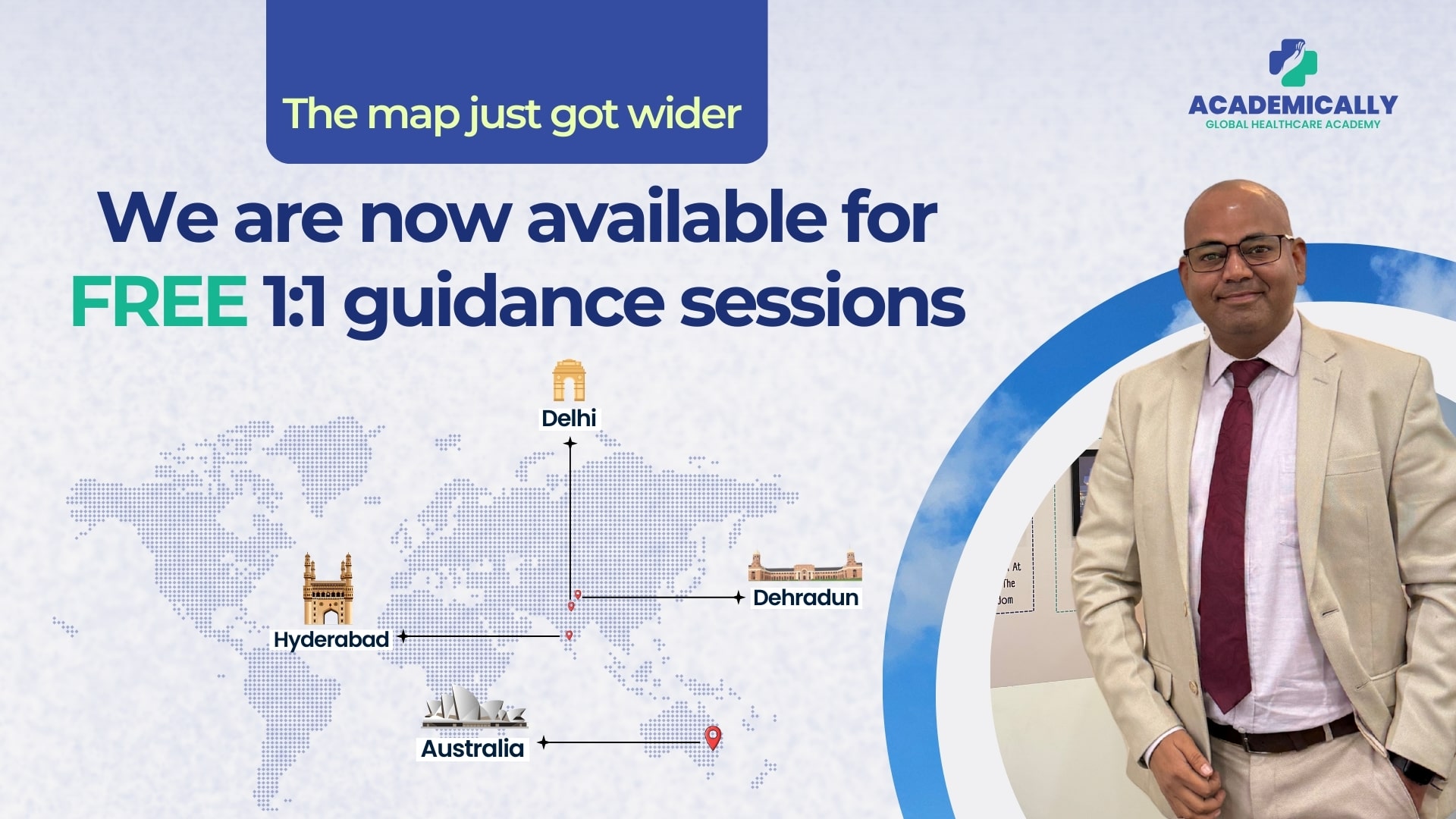Practice makes a man perfect, isn’t it?
Especially when you are taking one of the most challenging exams for medical licensure in the United States, the USMLE Step 1.
And guess what? Step 1 is just the beginning. You will also have to go through USMLE Step 2 and Step 3. For this, it is essential that you clear the exams on the first attempt. That’s why you have to go through the USMLE Step 1 practice questions.
In this blog, we’ll walk you through free USMLE Step 1 practice questions with answers, show you how to approach mock tests strategically, share expert tips to boost your performance, and recommend some of the most trusted platforms to help you practice smarter, not just harder.
USMLE Step 1
The USMLE Step 1 is the first of 3 licensing exams required to practice medicine in the U.S.
| Aspect | Details |
| Format | 280 MCQs divided into 7 sixty-minute blocks each |
| Focus | Basic sciences (Anatomy, Pathology, Pharmacology, etc.) |
| Duration | 8 hours (including breaks) |
| Status | Pass/Fail (no numeric score) |
Before taking the USMLE, make sure that you are eligible for the exam. If you son’s know where to check or don’t know how to do it. You can…
USMLE Step 1 Practice Questions
Pharmacology: Foundational Science
A 27-year-old woman comes to the office for counseling prior to conception. She states that a friend recently delivered a newborn with a neural tube defect and she wants to decrease her risk for having a child with this condition. She has no history of major medical illness and takes no medications. Physical examination shows no abnormalities. It is most appropriate to recommend that this patient begin supplementation with a vitamin that is a cofactor in which of the following processes?
(A) Biosynthesis of nucleotides
(B) Protein gamma glutamate carboxylation
(C) Scavenging of free radicals
(D) Transketolation
(E) Triglyceride lipolysis
(Answer: A)
Biostatistics
A study is designed to evaluate the feasibility of acupuncture in children with chronic headaches. Sixty children with chronic headaches are recruited for the study.
Children receive a usual therapy too. In this therapy, they aretreated with acupuncture. This happens three times a week for 2 months. Which of the following best describes this study design?
(A) Case-control
(B) Case series
(C) Crossover
(D) Cross-sectional
(E) Historical cohort
(F) Randomized clinical trial
(Answer: B)
Social Sciences (Communications)
A 26-year-old woman comes to the physician with her husband for counseling prior to conception. Her mother and three of her five siblings have type 2 diabetes mellitus. She is 170 cm (5 ft 7 in) tall and weighs 82 kg (180 lb); BMI is 28 kg/m2. Her blood pressure is 148/84 mm Hg. Physical examination shows no other abnormalities. Her fasting serum glucose concentration is 110 mg/dL. Which of the following is the most appropriate initial statement by the physician?
(A) “Let’s review ways you can optimize your own health before conceiving.”
(B) “We should test you for islet cell antibodies before you try to conceive.”
(C) “You can conceive right away since you are in good health.”
(D) “You should avoid gaining weight during pregnancy because you are already overweight and at risk for type 2 diabetes mellitus.”
(E) “You should have no problems with your pregnancy if you start insulin therapy.”
(Answer: A)
Want more USMLE Step 1 practice Questions? Enrol in Academically’s USMLE Preparation Course and access the best resource for your USMLE.
Why Practice Matters Before Step 1
Every successful USMLE candidate will tell you, answering practice questions is where real learning happens. Here’s what you gain from regular question-based learning:
- Reinforce high-yield facts through repetition
- Understand the structure and logic of exam questions
- Learn to differentiate between similar-looking options
- Improve decision-making under pressure
- Identify trends and recurring clinical scenarios
- Retain information longer through active recall
It’s not about cramming facts, it’s about thinking like a clinician, and that comes only through deliberate, consistent practice.
USMLE Step 1 Practice Strategy
Practicing questions is not just about answering them. It’s about how you solve them, what you learn from your mistakes, and when you practice. Here’s how to approach USMLE Step 1 practice questions the smart way:
| Strategy | Why It Matters | Pro Tip |
| Daily Practice (40–80 Qs) | Builds habit, recall & endurance | Even 20 well-reviewed questions are effective |
| Timed Practice Mode | Simulates real exam stress and pace | Use a stopwatch or timer |
| Detailed Answer Review | Reinforces learning, exposes weak concepts | Review correct answers too |
| Mistake Journal | Helps track & revise weak areas | Update it after every session |
| Mixed Question Blocks | Prepares you for real Step 1 format (random subjects) | Avoid single-topic batching |
| Weekly Self-Assessment | Monitors progress & builds confidence | Take 1 mock test every 7–10 days |
| Guessing Without Reason | Can form wrong recall patterns | Always know why your answer is correct |
Also Read: USMLE vs UKMLA
Parting Thoughts
The USMLE Step 1 is the first step towards medical licensure in the US. Make sure you practice lots of questions to be prepare well for the exam. Take necessary help when and where required. Because this Step 1 takes you to the nest steps of USMLE.
So don’t just read- solve, review, and repeat.
If you have any questions or doubts, feel free to ask us. Our experts will guide you through all the doubts and process according to your needs.




